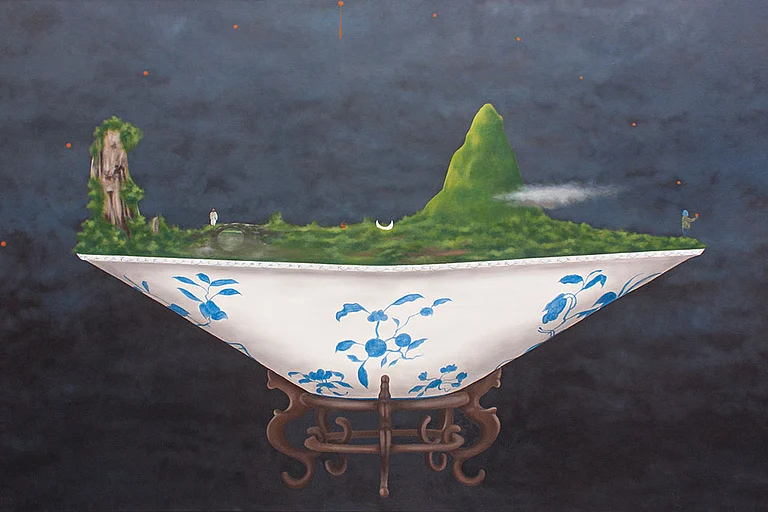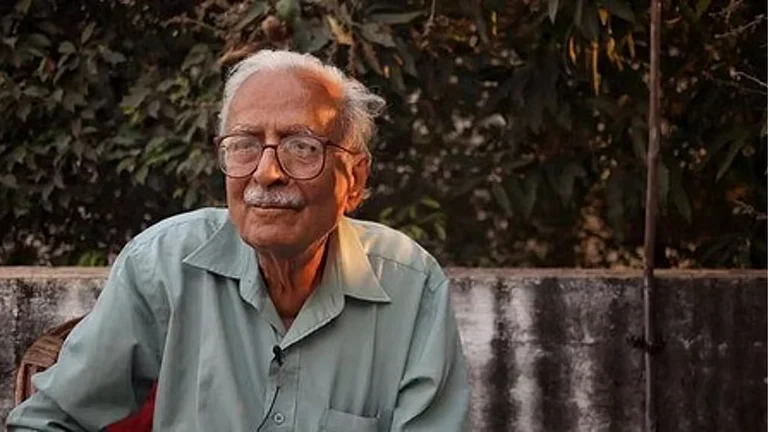In the latest 12-page catalogue of Ravi Pocket Books, novels barely stretch to the third page. The rest of the pages are full of general, technical, and religious books. Among the first and the last-remaining publishers of Hindi pulp fiction, Meerut-based Ravi Pocket Books used to produce up to six new novels every month in the 1990s. Now novels make a tiny chunk of their sales.
On the other hand, the latest novel by Surender Mohan Pathak, Blind Deal, ranks 11th on Amazon Kindle in crime fiction category. Along with late Ved Prakash Sharma, Pathak is the most well-known Hindi novelist who helmed the ‘golden age’ of Hindi pulp fiction in 1980s-‘90s. Novels by Amit Khan are being read by lakhs on Kindle and Pratilipi — with one novel having over 21 lakh digital readers.
While many people, including those in the books business, lament the doom of Hindi novels because of the rise of television and digital media, Khan disagrees. He said it’s an evolution rather than a decline.
“Whenever a new thing comes, the older generation has an issue with it, and we are experiencing a ‘digital kranti (revolution)’ — not just a minor change. Some writers, readers, and publishers have not been able to adjust to ebooks, but we have to adapt,” said Mumbai-based Khan, who has been writing for 35 years.
Khan is from the current generation of Hindi novelists who are walking on the path paved by the greats like Pathak and Sharma.
Traditional pulp ecosystem in the digital era
While it’s standard practice at several bookstores to offer a five-ten percent discount, it was not always the case with pulp — one reason being that those were already priced low. The practice in Meerut was started by Bhupinder Kumar Chaudhary’s father, who started Janata Book Stall in 1978. This boosted sales as every paisa reduced, made novels affordable for those who couldn’t have bought otherwise.
At least two generation of readers got their novels from Chaudhary’s stall, which celebrated its 40th anniversary in 2018. In 2022, Chaudhary shut shop.
Chaudhary told Outlook, “TV and internet were already eating into the book business. Comics were the first to disappear. In 1990s, people used to place orders for comics in January itself for summers. Then private TV channels drove women readers away from novels.”
He said while men used to mostly read thrillers, women read novels on social themes by the likes of Rajhans, Ranu, and Manoj.
“Saamajik upanayas (social novels) began to fade when TV channels came up with so many serials. Many women used to come here from Sadar or Thapar Nagar areas to buy novels, but they switched to TV,” said Chaudhary.
The novels’ sales were going down for years by the time the digital boom began in India, but Chaudhary was still pushing through, diversifying into selling books for competitive exams and stationary items. While he could run the shop with falling novels’ sales for years, the Covid-19 pandemic broke his back.
He said, “Readers were already switching to internet. The pandemic pushed them away from reading completely. The shop was shut for three months straight because of lockdowns. When we reopened, the novels were the first to take the hit. I have not turned a profit since 2019.”
“It’s time for me to move on,” said Chaudhary as he cleared his stock at a discount before pulling down shutters for one last time.
As reading habits and publishing trends evolve, the ecosystem that had sustained pulp fiction for decades is being driven to the edge as it finds it hard to adapt to changing times.
Ravi Pocket’s Books’ Manish Chand Jain told Outlook that the pulp market was built around a society that’s no longer the same. Hence business too is not the same.
He said, “Large part of our sales were at railway stations and bus stands. As travel time reduced with faster trains and shorter routes, people began to give up novels.”
Jain further said that points of sale also kept fading over the years.
He said, “All book stalls around bus stands faded around 10-12 years ago. AH Wheeler used to centrally procure books, but that has changed as now individual stalls procure individually. Moreover, Wheeler stalls have been turned into general stores where they sell snacks and drinks and novels are not a priority.”
The changing times have affected sales drastically. Jain said, “We are barely publishing new titles now. Previously, we would publish up to six novels a month with a print run of 1.5 lakh on an average. All copies were sold. The sales fell to 1,000-2,000 copies a month by the time Covid-19 hit. Now we barely sell over 100 copies a month, but we can’t be confident even about 20.”
While the Chaudharys and Jains of the pulp fiction ecosystem find it hard to catch up with the digital era, there are writers are publishers who are leveraging the internet to take their works to unprecedented heights.
Writers, publishers in the digital era
Amit Khan has published over 100 novels in a career spanning 35 years. In all his years, he has learnt one thing about storytelling.
“If your story has substance, people would spend money to read it,” said Khan in an interview.
Khan says the digital boom has opened many avenues for writers, readers, and the craft of storytelling. Previously limited to just print medium, now novels are being adapted into audiobooks and web series, which has not only given recognition to writers but has also provided more storytelling platforms for consumers. Popular platforms like Storytel, Pocket FM, Kuku FM, and Spotify are increasingly adapting novels and short stories.
Khan’s novel Bichu ka Khel was adapted into a popular web series in 2020 for Zee5. Several of his novels have been turned into audiobooks and, most recently, Spotify has adapted his popular Commander Saxena novel series into an audio series.
“Several of my stories are being adapted into web series at the moment. Some people are inherently negative, but I am a positive person and I see digital medium positively. Novelists are storytellers and these changing times have given so many storytelling platforms to us such as podcasts, ebooks, audiobooks, and web series. It’s a good thing,” said Khan.
Khan bluntly said that people who talk negatively of the digital era are those who could not correct their own flaws.
He said, “Every writer cannot be a Gulshan Nanda. Those whose works are not read blame everyone other than themselves. They blame the Hindi language or their publisher. Some publishers blame the reader or Hindi market rather than looking at their own flaws such as poor editing, poor binding, or falling content quality.”
Khan insists that writers should evolve with the times and adapt to the digital era. He tells Outlook, “Even print medium evolved over the years. We are now published by Penguin and Harper Collins. Our books are now in stores alongside top international writers. Our stories are being read in lakhs online. If that’s not the reward of changing times and the digital era, then what is it? And if there is not any money in Hindi writing, how am I living in Mumbai’s Andheri West? I have never had a job other than writing. This is all I have ever done.”
Anadi Shubhanand started Sooraj Pocket Books in 2012 — just when India was starting to fully embrace the internet.
“How long can you resist change? The sooner you adapt, the better it is,” said Shubhanand. He tells Outlook that almost all of Sooraj’s novels have been converted into audiobooks and two novels are in the process of being adapted into web series — Fareb by Amit Srivastava and Kameena by Shubhanand, who is a writer himself.
Shubhanand said you need to publish as per readers’ taste. If they are moving to digital, then you also have to move.
"Some people say that the digital shift is killing sales of printed books. It’s not. The person who reads ebooks will read ebooks and the person who reads paperbacks will read paperbacks. One will not affect the other,” said Shubhanand.
He added that Sooraj has more digital readers than print readers.
“Covid-19 certainly increased the trend towards digital. Now we have more sales on Kindle than in print. Even people from remote and rural areas, who cannot access printed books, read us online. This was not possible earlier,” said Shubhanand. Khan also said that readers can access favourite books that are out of print online.
“People now message me that they have reread some of my novel online that they read in print 20 years ago. That novel is out of print but it’s available as an ebook. Previously, they had to run from stall to stall to look for a novel, but they can now simply download an ebook or buy it from Amazon,” said Khan.
Current writers and the future of pulp fiction
Amit Khan said his generation of writers is carrying forward the legacy of the likes of Devaki Nandan Khatri, Ibne Safi, Om Prakash Sharma, Ved Prakash Sharma, and Surender Mohan Pathak. They have great shoes to fill. Several writers from Khan’s generation started writing at a time when sales had already started to fall and publishers were shutting shops.
Parshuram Sharma, one of the most prolific Hindi novelists who also wrote memorable Hindi comic book characters Nagraj and Angara, said publishers shutting shops is mainly responsible for decline.
“If a novel is published and publicised, then it would be read,” declares Parshuram, a contemporary of Ved Prakash Sharma and Surender Mohan Pathak.
As someone who has been part of the golden age of both Hindi novels and comics, Parshuram has seen the industry evolve. He has seen three generation of writers — those who were there when he started, his contemporaries, and those who followed him. He tells Outlook what current writers and publishers are doing wrong.
He said, “New writers take short cuts. They lack in research and they also go for self-publishing. We used to do intensive research for our novels. You need to remember we wrote in pre-internet era. Now they have Google, yet we see sloppy research.”
Recalling two anecdotes, Parshuram said, “Once a reader approached me asking when did I go to London. I told him I had never been there. He was referring to a scene in one of my novels that was set in London. I had researched extensively to get that street in London and its shops right. Then there was another scene in which a character had to take control of a plane in the air. I researched how a plane is flown and what happens in such cases. All of this was before the internet.”
Writer and long-time pulp reader Satya Vyas also highlighted misguided approach of writers.
“Pulp fiction writers are still writing decades-old jaasoosi stories, whereas crime and investigation techniques have undergone a great change over the years. The new generation of writers also believe repeating yesteryears' jaasoosi writers as a benchmark of success," said Vyas.
This mismatch between writers' approach and new readers' taste has affected the creation of new readership. Vyas added, "I always say the reader is smart, who spends money and time to buy and read your books. You can't fool them. While older readers may still buy such books because of nostalgic value but such a dated approach has failed in creating new readers."
Despite these shortcomings, the current generation of writers have caught up with changing times. Some of them have adjusted their writing styles, covers, and even titles — as catchy titles played a great role in popularity of pulp novels of yesteryears. Look at these titles that would scream for commuters’ attention at Wheeler stalls — Gandhi Tere Desh Me, Ravan Ram Ke Vesh Me; Ye Ayodhya Hai Ravan Ki; Mera Beta Sabka Baap; Faansi Do Kaanoon Ko; Khoon Bahega Gali Gali; Sher Bolega Meow Meow; Kanoon Ka Pandav Karega Taandav, etc.
Now, writers and publishers are adapting English titles and are switching to conversational Hindi rather than puritanical Hindi as some old-timers would prefer. Kanwal Sharma, who has published eight novels, has titles like Entrapped, Second Chance and Gypsy. His language not just includes English but Urdu vocabulary too.
He tells Outlook, “English is a part of me and most readers, so it’s natural to have English words in our stories because that’s how we talk today. You cannot have a complete conversation in Hindi. Moreover, since new readers are reading lots of English content, familiar words and phrases in Hindi novels give them a sense of naturality.”
What is the future of pulp novels though? While there have been articles for over a decade saying pulp is breathing its last, the current generation of writers is hopeful.
While Kanwal acknowledges that English content’s popularity, declining reading habits, and closure of stores have affected Hindi novels, he maintained the present scenario is better for new writers than 1990s.
“In the 1990s, pulp novels had competition from magazines such as Grihashobha and there were many writers across genres. Now you have fewer writers and little diversity as people are mostly writing only mythology and mystery-thrillers. The presence of more platforms and lack of diversity in stories mean writers have better chances today,” says Kanwal.
However, Kanwal did have words of caution. As a teacher, he has observed students and teachers closely and therein lies his worry about declining reading habits.
He says, “Forget students, even many professors can’t recommend you two books other than textbooks. That’s the status of declining reading habits. You need to be a reader to be a writer. As the number of readers fall, the number of new writers would likely fall too.”
There might not be another Ved Prakash Sharma or Surender Mohan Pathak but there would certainly be more writers — just like Sharma and Pathak themselves emerged after the likes of Ibne Safi, Om Prakash Sharma, Gulshan Nanda, and Prem Bajpayee. Sharma and Pathak wrote alongside Parshuram Sharma, Rituraj, and Rajhans. In turn, these writers were followed by Amit Khan, Kanwal Sharma, Anil Mohan, Anil Saluja, and others.
The answer to the future of Hindi novels likely lies with what Shubhanand and Shagun Sharma have to say.
The future would not retain the ‘pulp’ tag as these novels were only called ‘pulp’ because of the paper they were printed on, said Shagun.
Now, publishers are increasingly adopting ‘white paper’ for novels and publishers like Hind Pocket Books — a Penguin imprint — and Harper Collins, are publishing pulp authors.
Shagun of Tulsi Paper Books says pulp authors would be identified by the nature of their stories rather than the kind of paper they are printed on, such as fast-paced plots, characters people relate to, and stories with original and diverse ideas. He also dismisses the notion that English might drive Hindi novels to extinction.
“The number of copies an English ‘bestsellers’ sells, would be the average sale of Hindi novels not long ago. Estimates say Harry Potter books have sold 55 crore copies worldwide. Vardi Wala Gunda — just one novel of Ved Prakash Sharma -- sold 8 crore copies. Fifteen lakh copies were sold on the day of launch. That was the popularity at the peak,” said Shagun.
Shubhanand tells Outlook, “It’s human tendency to seek stories, so storytelling is not going anywhere. Therefore, Hindi novels are also not going away.”
Shagun said the reader has not gone anywhere. They are there and they are seeking good and diverse stories.
“It’s true the number of readers is not equal to what it once was, but it’s still similar. If we once sold 10,000 copies, now we are selling around 6,000. Readers are still there and they are looking for good stories. We are seeking new and good writers. Producers are seeking new stories. The genre is set for a revival,” said Shagun.

























